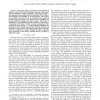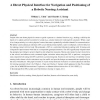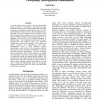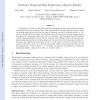108
Voted
CDC
2010
IEEE
14 years 7 months ago
2010
IEEE
This paper studies a general class of formations of unicycle robots. One of the robots plays the role of the leader and the formation is induced through a constraint function F tha...
98
Voted
CDC
2010
IEEE
14 years 7 months ago
2010
IEEE
We consider the problem of designing controllers for nonholonomic mobile robots converging to the source (minimum) of a field. In addition to the mobility constraints posed by the ...
149
Voted
AR
2011
14 years 7 months ago
2011
People often use direct physical contact to guide a person to a desired location (e.g., leading a child by the hand) or to adjust a person’s posture for a task (e.g., a dance in...
131
Voted
AROBOTS
2011
14 years 7 months ago
2011
—In this paper we consider the problem of controlling multiple robots manipulating and transporting a payload in three dimensions via cables. We develop robot configurations tha...
98
Voted
ICRA
2009
IEEE
14 years 10 months ago
2009
IEEE
Abstract-- This paper presents a framework for generating time-optimal velocity profiles for a group of pathconstrained vehicle robots that have fixed and known initial and goal lo...
128
Voted
FLAIRS
2009
14 years 10 months ago
2009
As robots become more common, it becomes increasingly useful for them to communicate and effectively share knowledge that they have learned through their individual experiences. L...
94
Voted
WDAG
2010
Springer
14 years 10 months ago
2010
Springer
In this paper, we study the exclusive perpetual exploration problem with mobile anonymous and oblivious robots in a discrete space. Our results hold for the most generic settings:...
127
click to vote
KI
2010
Springer
14 years 10 months ago
2010
Springer
Abstract. This paper presents a novel method for developing and evaluating intelligent robot behavior for joint human-robot activities. We extended a physical simulation of an auto...
ICRA
2010
IEEE
14 years 10 months ago
2010
IEEE
To build autonomous robots capable to plan and control tasks in human environments, we need a description of trajectories that allows the robot to reason on his moves. In this pape...
99
Voted
ICES
2010
Springer
14 years 10 months ago
2010
Springer
Abstract. In an application where autonomous robots can amalgamate spontaneously into arbitrary organisms, the individual robots cannot know a priori at which location in an organi...




